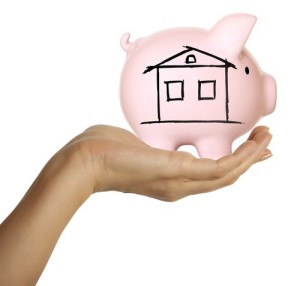 If buying a home is in your future, one of the realities you’ll need to face is the need to save for a down payment. Depending on the type of mortgage you qualify for, you’ll need anywhere from three to upwards of 20 percent of the purchase price in order to close. While that may seem like a lot of money to come up with in one lump sum, it can be done with some forethought, planning and discipline.
If buying a home is in your future, one of the realities you’ll need to face is the need to save for a down payment. Depending on the type of mortgage you qualify for, you’ll need anywhere from three to upwards of 20 percent of the purchase price in order to close. While that may seem like a lot of money to come up with in one lump sum, it can be done with some forethought, planning and discipline.
Here’s some of our best advice for saving money for your down payment.
Determine what you can afford
One of the first steps you need to take when you’re house shopping is to get pre-qualified for a mortgage. Not only will this make you more attractive to sellers, it will inform you how large a loan you can reasonably expect to carry. That, in turn, will tell you how much you need to save for your down payment. Depending on what percentage you’d like to put forward as a down payment, your mortgage lender can then calculate your target home price. Remember, the larger the down payment you can manage, the less you will need to pay each month for private mortgage insurance (PMI) and the better the interest rate will be for your loan, so it’s best to save as much as possible.
Find out if you qualify for a mortgage with a lower down payment
There are certain types of mortgages that allow buyers to put down a significantly lower down payment than a conventional loan, including an FHA loan, a VA loan and a USDA loan. Each loan type has its own set of qualifications, and these may be a good choice for you if you fit the criteria.
Decide on a timeframe
You probably won’t be able to save enough money overnight, so it’s a good idea to give yourself a timeframe for saving this money. If you’d like to begin your home search in earnest in three years, take the amount you need to save and divide it by the number of months you’ve given yourself to determine how much you need sock away each month.
Open a savings account
If you don’t already have a savings account where you do your banking, now is the time to open one. Most banks will allow you to set aside a fixed amount each month to be transferred from your checking to your savings, and automating the process will help keep you on track. Consider depositing one-time payments, like tax refunds, directly into your saving accounts, to reach your goal more quickly.
Check your credit
Your credit can help you score a better deal on your interest rate – as well as more breathing room with your down payment – as long as your score is good. As soon as you’ve decided to start saving, check your credit report to make sure it’s accurate. Sometimes credit reports contain inaccurate information that can hurt you, so give yourself plenty of time to clean up your report and your credit score.
Compliments of Virtual Results






 Catch Our Feed
Catch Our Feed Subscribe via Email
Subscribe via Email Follow Our Tweets
Follow Our Tweets Friend Us On Facebook
Friend Us On Facebook Watch Us On Youtube
Watch Us On Youtube